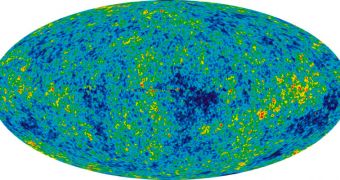Recent studies carried out by international teams of astronomers are reveling that the Universe may not have the size we currently attribute to it. At this point, it is difficult to say whether it's actually smaller or bigger than existing mathematical calculations show.
The uncertainty about its real dimensions stem from a changing view that astrophysicists and astronomers have on stars called Cepheid variables. These objects have until now been used to calculate distances in the Cosmos, but it would appear that this was a mistake.
The entire assumption on which space studies were conducted using Cepheid variables as a reference point was that they do not shift their properties as time passes. Even if they pulsate as seen from Earth, they do so in a repeatable manner, that always yields the same result.
But recently astronomers learned that these stars are losing mass as they do so. This discovery is bound to skew a host of scientific results and theories that were based on these “standard candles.”
If the luminosity variations Cepheid stars display are not consistent, then it means that the distances calculated using this assumption may be incorrect. The research team that conducted the investigation included University of Western Ontario astronomer Pauline Barmby.
“The biggest problem in astronomy is that when we look at something in the sky, we don’t know how far away it is,” adds Barmby, who is based at the university's Department of Physics and Astronomy.
“Measuring distances is important to understanding the properties of the things in the Universe,” she goes on to say. The expert's team used the NASA Spitzer Space Telescope to arrive at these results.
The conclusions directly contradict the calculations made in 1924 by famed astronomer Edwin Hubble, who showed that the Milky Way is in fact one of very many galaxies, spread out in the Cosmos.
Data collected by analyzing Cepheid variables was used to determine that galaxies are currently flying apart from each other. Dark energy – as a concept – was introduced to explain this behavior.
“It doesn’t mean that everything we thought we knew is wrong, but if you want to do the best possible job, this effect needs to be considered,” the UWO researcher goes on to say, adding that an estimated 25 percent of all Cepheid stars were found to be shrinking via constant mass loss.
“If one measurement examined the stars when they were younger and the other when they were older, then the disagreement would make more sense. By taking images with an infrared telescope we can see the dust in the mass that is being lost, which allows us to measure it,” Barmby explains.
It remains to be seen how the international astronomical community will react to the findings. If they are confirmed, then we could expect to see a host of studies aimed at reassessing the size and behavior of the Universe.

 14 DAY TRIAL //
14 DAY TRIAL //